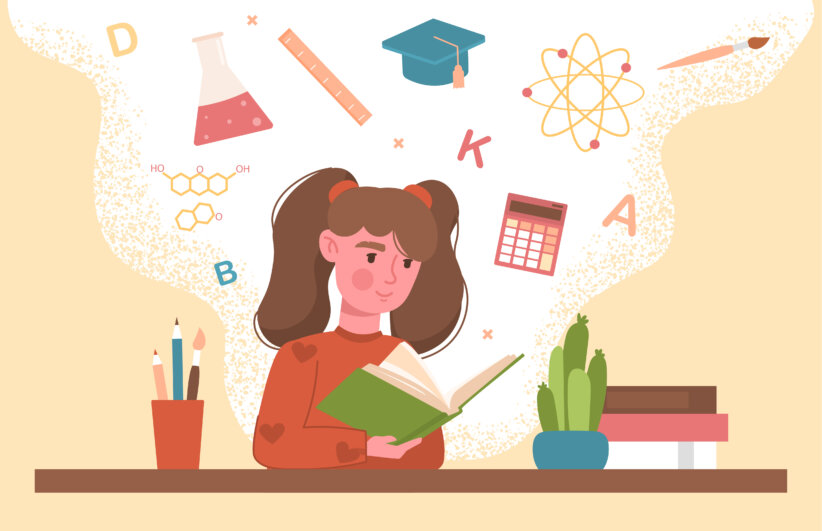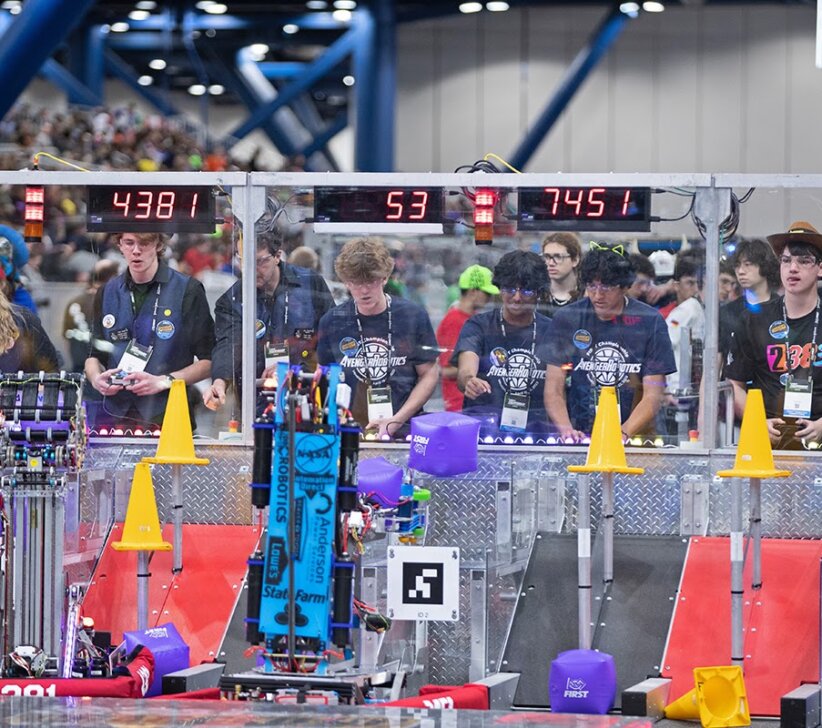For Sheryl Knapp, the idea of “inclusion” is somewhat of a contradiction. Knapp’s daughter has Down syndrome and is fully included in her sixth-grade class in Ridgefield, Conn. But whether this 12-year-old should even be in the same room learning alongside her peers shouldn’t be in question, says Knapp. It makes perfect sense to her that all children should learn together.
Just as important, she says, is that inclusion means her daughter will more likely be embraced by her classmates and considered as one of them.
“By being included, she’s learning the kind of music other kids are listening to, how to dress, and especially how to act with kids her own age. That’s stuff adults could never teach her,” Knapp says.
For Irene Van Riper, however, inclusion is a strategy that doesn’t work for everyone. An assistant professor of education at New York’s Mount Saint Mary College, Van Riper spent the early years of her career as a special education teacher, in both inclusive and self-contained classrooms.
“I’ve seen too many situations where kids become frustrated and anxious, not so much because of their disabilities, but because the teachers are not equipped with the right tools to help them,” she says.
While no one wants a return to the days when all children with special needs were segregated, the idea of full inclusion in a classroom – whether for kids with attention deficit disorder (ADD), autism, or even severe physical disabilities – has prompted passionate debate among parents, teachers and special education advocates for years. For many school districts nationwide, it’s seen today as a shared value and belief system, one that proponents say can develop caring, competent students who are all contributing members of society.
But even special education professionals point out that inclusion demands a cautious approach.
Lydia H. Soifer, Ph.D., founder and director of The Soifer Center in White Plains, N.Y., which helps kids struggling with language, literacy, social or other academic challenges, says classrooms need to “include with wisdom, with real planning and with effective programming for both children and teachers.”
How Did We Get Here?
“Inclusion,” or the idea that kids with varying disabilities can be functioning members of a general classroom, was federally recognized in the Education of All Handicapped Children Act of 1975. The law guaranteed children with special needs the right to be educated in a public school in their neighborhood. Before its passage, most kids with disabilities were educated outside the public school system.
Revised, expanded and reauthorized in 1997, the law is known today as the Individuals with Disabilities Education Act (IDEA), it mandates that youth with disabilities, between ages 3 and 21, be educated in the least restrictive environment.
A child with special needs can only be removed from a general education classroom, the law states, “when the nature and severity of the handicap is such that education in regular classes with the use of supplemental aid and service cannot be achieved satisfactorily.”
What Inclusion Should Look Like
For Paula Kluth, a special education consultant and autism expert who works with teachers to provide inclusive opportunities for students with disabilities, full inclusion in the classroom is quite doable.
Kluth, the author of several books, including You’re Going to Love This Kid: Teaching Students with Autism in the Inclusive Classroom (Brookes Publishing Company, 2003), says inclusion is not simply about giving children with special needs an appropriate education. It’s also about creating truly inclusive schools where all children are recognized. “It’s not just something that’s good for kids with disabilities; it’s about trying to bring the performance up for everybody.”
Having lectured and consulted in schools nationwide, Kluth sees “uneven staff development” as partly to blame for unsuccessful inclusion. “When parents and others say it doesn’t work, most of them have not seen true inclusion,” she says, adding that observers mistakenly see the inclusive classroom only as a place for children to be educated rather than as a dynamic set of supports and services that helps kids of all abilities.
She often tells educators to look to places where inclusion has been successful. “You can get all the training in the world, but if you haven’t really seen it, it’s hard to get your head around the model.”
Schools where inclusion is working share common denominators, including committed leadership, democratic classrooms, reflective teachers, a supportive culture, and responsive, relevant curriculum and instruction, Kluth says.
Where It Has Worked
Inclusion has been a way of life at Chicago’s Audubon Elementary School for the last seven years. When former principal John Price, now deputy chief of that city’s Ravenswood-Ridge Elementary School Network, began the process, his ultimate goal was for inclusion to be a lever for schoolwide improvement.
Price used two strategies – differentiated instruction and changing both the climate and culture of the classroom. “The thinking was that if we did those things well, we would see improvements for all kids,” he says.
It worked, and significant achievement gaps that had once existed in this Blue Ribbon school of 530 students were suddenly turned around, Price says. Part of the success was due to a lower teacher/student ratio in each classroom, which now included a general education teacher, a “high quality” teaching assistant and a special education instructor.
Differentiated instruction is a strategy that Sheryl Knapp’s daughter responds well to in her own school. While she’s “very behind academically across the board,” Knapp says her daughter receives “significant modifications” to make up for her challenge areas.
While other kids in the class work on complicated fractions, for instance, Knapp’s daughter is asked to solve simpler problems. While others are introduced to vocabulary that requires a greater understanding of science, she is provided with words she can understand.
The Challenges
Still, both general and special education teachers acknowledge there are problems.
Van Riper, the college educator who worked as a special education teacher earlier in her career, says she has walked into general education classrooms where a child with special needs was screaming and crying on the floor and the teacher was unable to deal with the situation.
“The crux of the problem,” says Van Riper, “is that we’re not arming our teachers with the tools and strategies that they really require right now.”
Putting high functioning autistic students in a general education classroom, for example, has obvious socializing benefits. But getting those students to appropriately interact with others needs the intense support of teachers trained to do just that, Van Riper says.
Lindsay Hu, a professor of childhood education at the Metropolitan College of New York (MCNY) and a former Los Angeles elementary school teacher of English language learners, says he knows how difficult it can be to manage diverse classrooms.
While supervising MCNY students assigned to public schools throughout New York City, Hu sees kids with a multitude of special needs. In some schools, regular education teachers share their classrooms with resource specialists, but often teachers don’t get the help they need. And that leads Hu to question the value of inclusion unless it is implemented correctly.
“In theory, inclusion is a wonderful thing, but practically speaking, I’m not sure it can maximize student learning and outcome. … I think the adult in the classroom is the critical linchpin to making sure there is a working, learning environment for every student.”
A recent report on WNYC, an affiliate of National Public Radio, suggested the New York City school system is moving away from full inclusion and is offering separate classes for approximately one-third of its 165,000 special education students. Administrators contend the needs of every child should be considered first before integrating a student with special needs in the regular education environment.
That means additional professional training for both principals and teachers through the Education Department’s new reform efforts.
Getting It Right
Lydia Soifer, who is also an assistant clinical professor of pediatrics at the Albert Einstein College of Medicine, believes that inclusion can work in some situations, but may not be right for every child with special needs.
“Children are too complex, have too many interactive, individual component parts that vary by circumstance, by environment, by emotional reaction and by intellect,” she says.
While co-teaching is a model that has certainly worked within the inclusive classroom, Soifer admits it is a “tall, tall order” to place on instructors.
“It is not enough to put the general education teacher and the special education teacher together,” she says. “They need to be properly trained and mentored over time.” Still, when that kind of team works, “it’s like a stunning choreography,” she says.
Soifer believes school teachers and administrators considering inclusion should ask themselves who can be included, how and why, and when a child should be included “with the necessary and intensive instruction, not only with appropriate supports, in place.”
For Chicago’s Price, the decision to create an all-inclusive environment was also based on his own beliefs. “For me, personally, as a dad and as a former principal, there is a real moral and ethical component to this.”
He believes that children with special needs have a right to an equal education and to have educators who care about them. Schools, he says, need to first consider the capabilities that these students possess, not what they can’t do.
The question of inclusion is a tough one for school districts, educators and especially for parents, says Soifer. Ultimately, however, it’s about what’s best for the child.
“Nobody wants his or her child to be different in a negative way,” she says, “but if you insist on inclusion and it doesn’t meet your child’s needs, is it about yourself or is it about the child?” n
Colette Connolly is a Westchester-based writer and mother of two. She also runs Connolly Communications copywriting and public relations business.
Did You Know … ?
About 95 percent of students with special needs, ages 6-12, are served in regular schools, according to the National Center on Education Statistics. But the way that they’re educated varies. Some schools “mainstream” kids with special needs into the general classroom. Others opt for “integration,” meaning special needs students may be in a general classroom for only part of a day.
Resources
- The Soifer Center – www.soifercenter.com – offers services for children struggling with language, learning, social, emotional or other academic challenges. It also provides resources and workshops for parents and educators in the New York metropolitan area on the ways in which individual children develop and learn.
- Autism Speaks – www.autismspeaks.org– funds research, helps increase awareness of and advocates for children with autism spectrum disorders and their families. The website’s Community Tool Kit includes information on successful school inclusion.
- Kids Together Inc. – www.kidstogether.org – provides information, resources, and trainings on inclusion for parents, educators and professionals who work with kids with special needs.
- Inclusive Schools Network – www.inclusiveschools.org – offers a forum for educators, students, family and community members to share experiences and ideas.
- Paula Kluth: Toward Inclusive Classrooms and Communities – www.paulakluth.com – shares her best practices and tips for full inclusion in the classroom.








